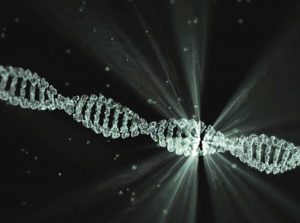
Written by Alexandra Putka
Edited by Dr. Hannah K Shorrock
Improving neuron firing regularity rescued incoordination but not muscle weakness in a SCA1 mouse model.
Spinocerebellar ataxias are characterized by problems within the cerebellum, the part of your brain responsible for balance, coordination, and walking. A central question within preclinical research for SCAs is whether these problems in the cerebellum can be corrected. One research group focusing on Spinocerebellar ataxia type 1 (SCA1) tried to do just that: fix cerebellar problems in SCA1 mice using a combination of two muscle relaxants, chlorzoxazone and baclofen. Did they succeed? The short answer is yes, but there are some caveats.
SCA1 is a devastating neurodegenerative disease with no cure. It is caused by a polyglutamine repeat expansion in the Ataxin-1 gene, meaning the gene has an enlarged repeat tract that is toxic to cells. This leads to the characteristic symptoms of loss of balance and coordination, and difficulties with swallowing and speech. These symptoms of SCA1 are often described as cerebellar, meaning they occur due to problems in the cerebellum. Purkinje cells, a type of neuron within the cerebellum, send information from the cerebellum to the rest of the brain and body to enable coordinated movements. Therefore, you can imagine that problems with Purkinje cells could cause uncoordinated movements. This is the case in SCA1.
You may have heard that neurons electrically transmit information throughout the brain. In SCA1, the electrical properties of Purkinje cells are disrupted; they cannot properly transmit information to other cells. This is seen as irregular spiking of these cells. They “spike“, or send information irregularly, rather than providing a smooth, predictable stream of information. This is what the research group wanted to correct. Could they rescue the irregular spiking and impaired balance of SCA1 with a dual treatment of chlorzoxazone and baclofen?
Before the research group could investigate this, they had two questions to answer about the mouse model they wanted to use in their treatment study:
- Do the Purkinje cells in this mouse model display the SCA1 disease signature of irregular spiking?
- Do the mice display behaviors characteristic of SCA1 disease like impaired balance?
To answer the first question, the authors measured the electrical properties of Purkinje cells in the cerebellum and found that these cells spike irregularly in disease mice, but normally in control mice. The next question the researchers asked was what causes these cells to spike irregularly. To find the suspect, the authors consider how neurons send information. Calcium entering the cell is a critical part of the process allowing neurons to transmit information to each other. Therefore, if calcium entry is disrupted, neuron spiking could also be disrupted. The authors used immunofluorescence to study the levels of different types of calcium channels in the brains of SCA1 and control mice. Calcium channels are the passages in the cell membrane that let calcium flow into the neuron. The group found that the SCA1 mouse cerebellum had decreased levels of certain calcium channels compared to controls. This suggests that problems with calcium entering the cell might underlie Purkinje cell electrical problems.
To answer the second question, the authors ask whether Purkinje cell spiking problems affect mouse behavior. The goal of mouse models is to represent human disease as best as possible, including symptoms of ataxia. It is therefore important that the mice used in this paper show the same progression of impairment of balance and coordination as SCA1 patients. The authors assess mouse balance and coordination using the rotarod task. On the rotarod task, which consists of measuring the length of time mice remain on top of a rotating rod, mid-stage disease mice fall off faster than control mice due to poor coordination. By late-stage disease, SCA1 mice show worse performance on the rotarod. As the authors plan on using muscle relaxants in these mice, it is also important to assess the baseline muscle function of these mice. The authors did this by using a hanging wire test and recording how long it takes for the mice to fall. Earlier in the disease, the mice do not show any differences in the hanging wire test, but in late disease stages, the SCA1 mice fall much quicker. This demonstrates that by a later disease stage, motor coordination and muscle strength are both affected.
Now we can return to the primary goal of this article: could the authors rescue the irregular spiking and impaired balance of SCA1 with a dual treatment of chlorzoxazone and baclofen? In testing these questions, the authors wanted to know whether the dual treatment resolved only the symptoms caused by impairments to the cerebellum—they wanted to make sure the muscle relaxant treatment was specific.
To determine whether this treatment fixes irregular spiking, the authors surveyed the electrical activity of Purkinje cells in brain slices treated with chlorzoxazone and baclofen. They evaluated different doses of both treatments to find the optimal dose at which irregular spiking is fixed, but other properties, such as the number of spikes per second or “firing frequency”, were not affected. They found that both low and high doses of these treatments affected firing frequency. However, an intermediate dose corrected spike regularity while leaving firing frequency untouched making this dose the best option.
With knowledge of the optimal dose to correct firing defects in brain slices, the authors move on to evaluate if this treatment improved mouse behavior when chlorzoxazone and baclofen were added to the drinking water. Administering treatments in drinking water is very simple and improves the potential for this work to move into human studies. The authors assessed the behavior of mice at two-timepoints: one in the middle of the disease and one later in the disease. The authors ask whether treatment affects disease symptoms caused by problems in the cerebellum—coordination—without negatively impacting muscle strength. They find that at mid-stage disease, treatment improves mouse performance on the rotarod task—they take longer to fall off. However, at late-stage disease, treatment no longer affects mouse performance on the rotarod task. Importantly, at both mid-disease and late time points, the muscle strength of the treated mice was not negatively impacted. This is reassuring because as muscle relaxants, chlorzoxazone and baclofen could easily be affecting muscle strength, but the findings here show that they are not. This confirmed that the treatment was effective at selectively targeting defects in the cerebellum and was not impacting the muscle.
At this point, the authors were excited because they now know the dosage of the treatment to correct irregular spiking and motor coordination. One final important question the authors wanted to ask is whether the treatment is well tolerated in mice. The authors find this is the case as the dual treatment did not cause mice to lose weight across the course of the study. This is very important if the treatment is to move forwards to patient studies, it must be well tolerated and not have any clear adverse effects in mouse models.
Previous studies showed the potential of this dual treatment in a different SCA1 mouse model. However, the mouse model previously used only had the disease-causing protein, called Ataxin-1, in Purkinje cells. This is not representative of human disease in which Ataxin-1 is present in all regions of the brain. Therefore, the current article uses a mouse model more representative of human disease, with Ataxin-1 existing in all cell types and regions of the brain. The takeaway from this paper is that dual muscle relaxant treatment is specific for symptoms caused by the cerebellum and does not affect other regions of the brain or muscles. These findings are exciting because calcium channel disruptions occur in several types of spinocerebellar ataxia, meaning this chlorzoxazone-baclofen treatment, which targets these channels, could be applied to diseases other than SCA1.
Key Words
Neuronal Spiking: The rapid increase in a neuron’s activity when the message from a nearby action arrives. This shows up as a sharp peak, or spike, on recordings of neuronal activity.
Conflict of Interest Statement
The author and editor declare no conflict of interest.
Citation of Article Reviewed
Bushart, D. D., Huang, H., Man, L. J., Morrison, L. M. & Shakkottai, V. G. A Chlorzoxazone-Baclofen Combination Improves Cerebellar Impairment in Spinocerebellar Ataxia Type 1. Movement Disorders, 2021. 36(3): p. 622-631. (https://pubmed.ncbi.nlm.nih.gov/33151010/)

Interrupciones en las repeticiones están asociadas con ataques epilépticos en SCA10
Escrito por Dr Hannah ShorrockEditado por Larissa NitschkeTraducido por Ismael Araujo-Aliaga Interrupciones en las repeticiones en SCA10 influyen en la estabilidad del tramo repetido y están asociadas con ataques epilépticos Read More…


Genetic variants in the NPTX1 gene cause cerebellar ataxia
Written by Dr. Hannah K Shorrock Edited by Dr. Celeste Suart Three genetic variants in the NPTX1 gene have been linked to cerebellar ataxia, providing a genetic diagnosis for seven Read More…


Cientistas desenvolvem uma nova abordagem para avaliar ataxia em casa
Escrito por Ziyang ZhaoEditado por Dr. Hayley McLoughlinTraduzido para o Português por Priscila Pereira Sena Um aplicativo para celulares recentemente desenvolvido permitirá aos pacientes avaliar a ataxia em casa. Há Read More…









